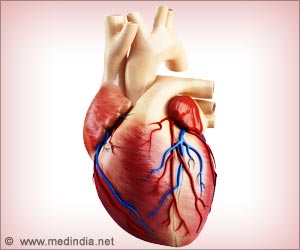An international team of scientists report that the likely causative agent of Kawasaki disease (KD) in Japan is a windborne agent originating from a source in northeast China.

The team included researchers from the University of California, San Diego and the findings are published in the May 19, 2014 online early edition of issue of PNAS.
KD is the most common cause of acquired heart disease in children. It is difficult to diagnose and, without treatment, 25 percent of children with KD develop coronary artery aneurysms - balloon-like bulges of heart vessels - that may eventually result in heart attacks, congestive heart failure or sudden death. Prevalence rates of KD are rising among children in Asia, the United States and Western Europe. Predictive models estimate that by 2020 one in every 1,600 adults in the U.S. will be affected by the disease.
First described in Japan in 1967 and named after its discoverer, Tomisaku Kawasaki, MD, the cause of KD has eluded two generations of researchers. Jane C. Burns, MD, professor and director of the Kawasaki Disease Research Center at UC San Diego School of Medicine and Rady Children's Hospital-San Diego, assembled an international team to help decipher the distinct seasonality of this devastating childhood illness.
Noting that the timing of KD outbreaks in Japan coincides with certain wind patterns from Asia, climate scientist Xavier Rodó, PhD, and colleagues at the Catalan Institution for Research and Advanced Studies and the Catalan Institute of Climate Sciences, both in Barcelona, used computer models to simulate air currents and airborne particle transport for all days since 1977 with high numbers of KD cases in Japan, based on data compiled by Yoshikazu Nakamura, MD, and colleagues at Jichi Medical University in Japan. The modeling indicated that KD cases in many Japanese locations, both in and out of epidemic years, peaked only when winds originated from a densely-cultivated region in northeastern China characterized by vast cereal croplands.
In 2011, the Barcelona researchers equipped an aircraft based in Japan with a newly designed large-volume air-filtering device to collect aerosol samples. With help from Hiroshi Tanimoto, PhD, and colleagues at the National Institute of Environmental Science in Tsukuba, Japan, the plane sampled at altitudes between two and three kilometers above Japan to avoid surface contaminants, and on days during the KD season when air currents originated only from northeastern China. Detailed microbiome analyses of the samples by Brent Williams, PhD, and Ian Lipkin, MD, at Columbia University in New York City identified Candida species as the dominant airborne fungus, a finding not previously reported from other aerosol sampling campaigns in other regions of the globe. Candida is a genus of yeasts and the most common cause of diverse human fungal infections worldwide.
Advertisement
Burns summarized the major findings:
*Prevailing wind patterns associated with KD cases in Japan track back to northeastern China, which is the country''s main cereal grain-growing region.
*KD has a short incubation time (less than 24 hours between exposure and fever onset), suggesting the cause is not a traditional infectious organism, but more likely a toxin, perhaps fungal in origin, that readily triggers a host immune response in genetically susceptible children.
*Air sampling in Japan during the winter KD season found unexpectedly high levels of Candida species within the rich microbiome of tropospheric winds.
"This is a Sherlock Holmes situation," said Burns. "The data suggest that people are doing something new (since World War II) in northeastern China. Could they be burning a biomass fuel in winter that carries the agent on aerosolized ash to Japan? Could there be some agricultural practice or crop or activity that is new since the 1960s when KD first started to appear in Japan? Could it be that the aerosolized particle is chemically altered to become pathogenic as it travels through clouds on its way to Japan?
"We need to figure out what the activity or condition is that creates these aerosols carried by the winds. There are certainly other source regions around the globe, but focusing on the link between northeastern China, Japan, Hawaii, and the west coast of North America is our best bet for figuring this out."
Burns said rising KD cases elsewhere in the world, notably in the Philippines and India, may involve the same agent originating from different source regions. She said the findings have broader implications as well.
"I think that KD represents a new disease paradigm," she said. In years of searching for its source, "we kept trying to shove a round peg into a square hole. Now I think the door has been opened to thinking about this disease in a new way that may well liberate our thinking about other diseases as well."
Co-authors include first author Xavier Rodó, ICREA and Institut Català de Ciències del Clima, Barcelona, Catalunya (Spain); senior author Josep-Anton Morgui and Roger Curcoll and Marguerite Robinson, Institut Catala de Ciencies del Cima, Barcelona, Catalunya; Joan Ballester, California Institute of Technology; W. Ian Lipkin, Brent L. William and Mara Couto-Rodriguez, Mailman School of Public Health of Columbia University; Yoshikazu Nakamura and Ritei Uehara, Jichi Medical Hospital, Japan; Hiroshi Tanimoto, National Institute for Environmental Studies, Japan.
Funding for this research came, in part, from La Marató de TV3 Foundation 2008 and the IC3 Foundation.
Source-Newswise










